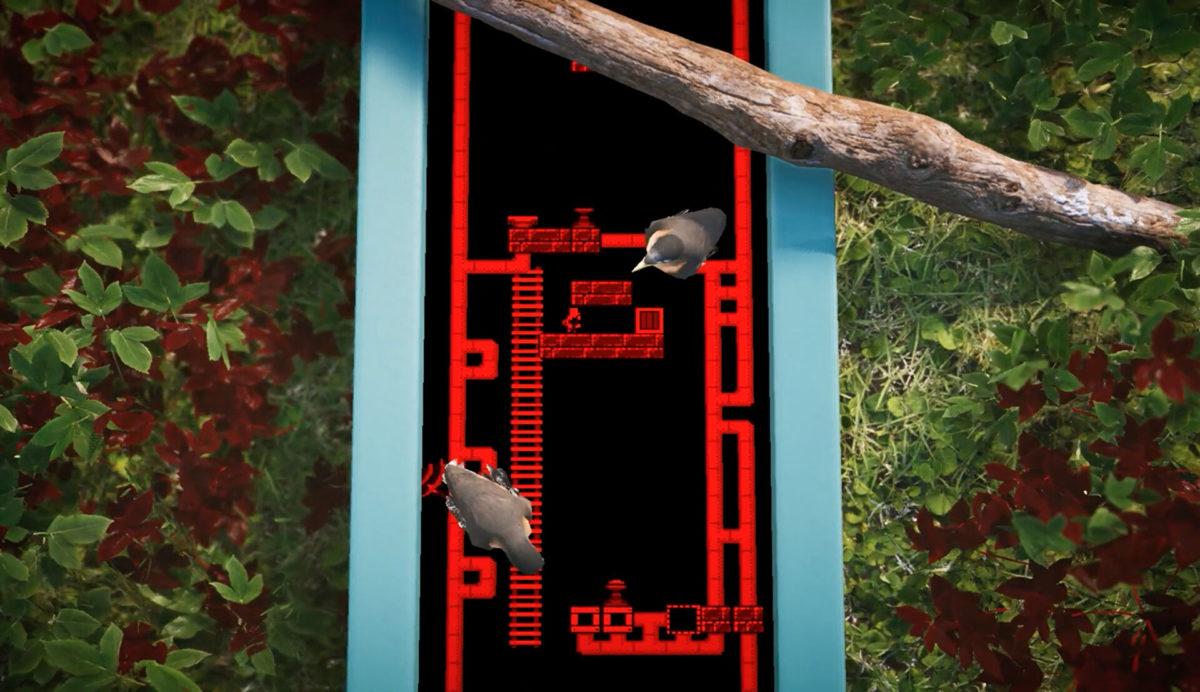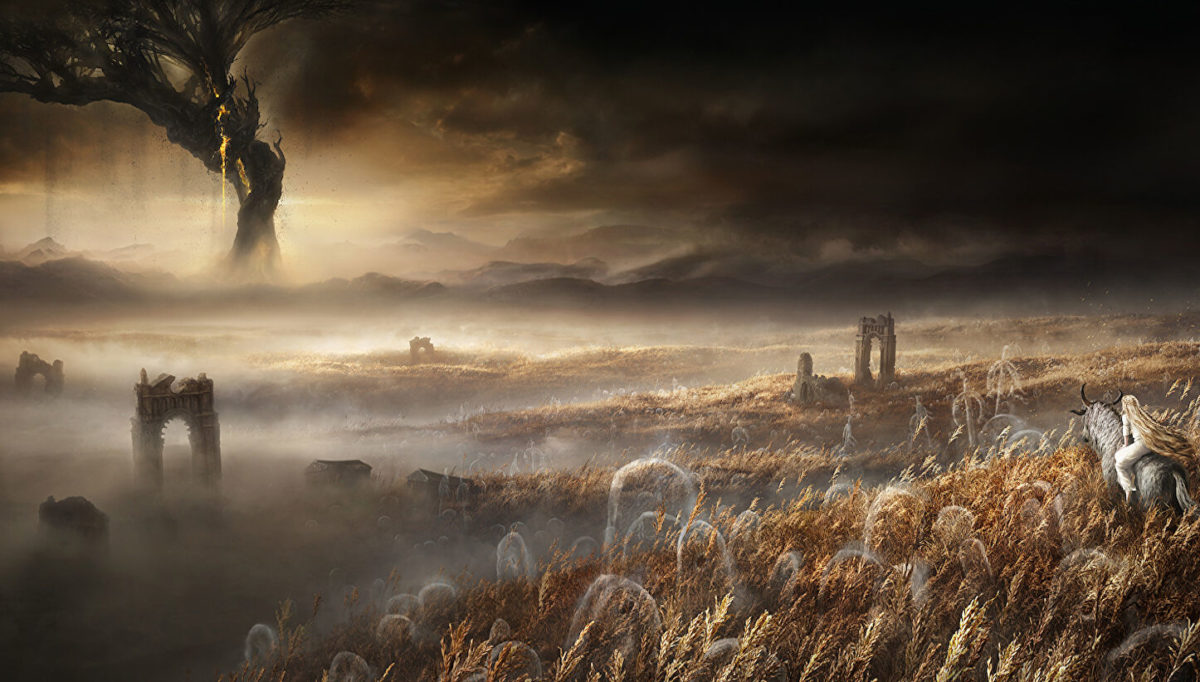As I took my first steps on Scars Above’s mysterious planet, I felt my excitement and fear rising. Almost immediately, an encounter with its grotesque alien creatures turned out to be much more complicated than I anticipated. I even died a couple of times before making any significant progress at all, giving me the impression that I was at the beginning of a harsh and nervewracking journey that was going to ask the very best of me to survive on its default difficulty level. But my fear of the unknown proved to be unjustified in this case, and the initial thrill dissipated after an hour or so when I’d unlocked the first few of a vast arsenal of weapons. After that, most of my battles became trivial, and they remained that way until the very end – even when I turned the difficulty up to hard.
Scars Above’s first section is calm. You’re introduced to your protagonist, Doctor Kate Ward, and the rest of the space scientific crew while they are investigating a strange object in Earth’s orbit. Some silly chit-chat, puzzles, and exposition later, you get to (barely) know your team and craft your first device — a tool that will become like the standard assault rifle you find in most shooters, but with shock ammo. Then, you’ll hear an unnecessarily serious speech from your captain that is supposed to be inspiring but ends up being cheesy due to its delivery and timing. The next thing you know, you wake up on an unknown planet with no idea about what happened or where everyone went.
Right after picking up an electric cutter – a basic melee weapon with the most boring attack pattern I’ve seen – I faced the first enemy. This one was easy enough, a kind of spider that usually brings some friends but doesn’t really mean any trouble — unless there are too many friends. However, when I grabbed the assault rifle I’d built and got back to the main road, it was the turn of the second type of creature: a mutated scorpion that usually hides underwater. It surprised me coming out of nowhere, and then zapped me with a poison projectile. After dealing with the beast and his partner, I realized that my life was still going down thanks to the new status. There was no way of curing this, and a few seconds later, I was respawning at the checkpoint. The same scene repeated a few times until I managed to stop catching the beast’s vomit with my face and reached the next checkpoint.
Before long you’ll end up being so powerful that you’ll find little to no resistance.What honestly felt unfair at first became the most important lesson I learned through the nine hours and six chapters of Scars Above: keep your distance from the enemies and everything they throw at you. Your electric cutter is a joke – even with the charged attack that you can unlock, it will always leave you exposed when you could just blow the aliens’ heads off with a good headshot. Of course, sometimes this will be challenging in a linear third-person shooter in which you’ll face faster monsters and smaller spaces with nowhere to run as you move through levels, but after the first couple of hours you probably won’t need any combat tips at all. You quickly craft new guns and gadgets and level up, and before long you’ll end up being so powerful that you’ll find little to no resistance.
In essence, the weapons in Scars Above are the typical guns you’ll expect from any type of shooter, but with an elemental twist: there’s the aforementioned assault rifle with electric bullets, a gun that can be charged up to shoot fire ammo, a grenade launcher that freezes enemies, and a shotgun that disintegrates them with acid. As you might imagine, you can chain attacks with these weapons and produce elemental reactions that will deal bonus damage to anything that comes near you, and you can also use the environment to your advantage. Fire and acid bullets create a strong explosion, while shooting an enemy standing on water with your grenade launcher will freeze it faster. Some enemies will have a weak point in their body that will represent the element you want to shoot them with, and there are color-coded orbs around the levels that are effectively explosive barrels that deal elemental damage, too.
The elemental damage system worked a little too well.This is a clever way of making you change weapons at all times, thinking of which is the best and most effective plan against what’s in front of you. It kept me interested for a while… until I realized that the system worked a little too well. Most of the creatures in front of me could be squashed in mere seconds by exploiting any possible elemental combination, regardless of their strength or the situation. Instead of being one part of a larger plan, shooting an electric orb at the right time completely exterminated all the threats around.
If this wasn’t enough of an advantage, Kate has the ability to craft a variety of gadgets, such as a barrier that protects her for a few hits, a gravity grenade that makes everything in its area except you slow for way too many seconds, or a hologram that baits creatures, among others. All of these use the same resource (batteries), which are crafted from a resource that’s pretty much everywhere, or replenished by refilling your inventory at any checkpoint. This is way too convenient because it means you’ll hardly run out of ammo or crafting resources, especially after you’ve increased your carrying capacity.
You’ll hardly run out of ammo or crafting resources.What’s worse is that the variety of gadgets that seem interesting and well thought-out when used individually felt useless when they start to overlap with each other. For instance, you can basically spam the gravity grenade and earn effectively the exact effect and/or advantages of all the other gadgets. And you can forget about dying when you find permanent healing items with several charges that can be easily refilled.
Some regular enemies that you’ll discover later will make things a bit more interesting, like one beast that can teleport behind you or a fungus monster that blinds you. They arrived a bit too late to the party, though, after I’d already become pretty bored by several hours of effortlessly killing everything around me.
Not even the bosses stand out as challenges, except perhaps for the first one that you meet while you’re still creating your basic guns. That doesn’t mean that these battles are completely uninspired – they do come with mechanics that will keep you changing ammo constantly and moving around big arenas. They are fun while they last, but they also don’t present ideas that you haven’t seen already in other games (and better executed). For example, breaking the surface where an enemy is standing isn’t exactly new, and it doesn’t feel great either when you can do it more than once in a row without letting the boss move or shoot you back if you’re fast enough. The fact that some boss battles are repeated doesn’t help the case, either.
What’s so frustrating about all of these issues is that Scars Above has its moments of pure joy.What’s so frustrating about all of these issues is that Scars Above has its moments of pure joy. Facing a new creature for the first time normally involves a moment of genuine surprise, and figuring out how to handle them is engaging. Even being an unstoppable killing machine can bring satisfaction when you feel rewarded by perfectly understanding the tools at your disposal, or just by feeling your own power. And some of the later areas even took me by surprise with their scatological and repulsive (but in a good way) design, at least when compared to the dull plains and boring swamps from the earlier stages. The lack of a map directing you around is a good choice as it makes you follow your intuition and find the way, even if none of the scenarios are really big or full of secret pathways. The building blocks for a more engaging game are here, but they are surrounded by elements that lack polish, depth, and any sense of challenge.
Apart from fighting, you’ll spend time analyzing resources, clues left in the environment, and some pretty basic symbol-matching puzzles. There’s an intention of bringing a scientific perspective, considering our protagonist’s background, which is mixed in the exploration – for example, when scanning unknown objects we hear what Kate is thinking. She approaches how one creature’s digestive system works with genuine amazement, wondering how its body evolved into that group of organs and functions.
The delivery of Erin Yvette, Kate’s voice actor, feels fresh and embodies a character more worried about discovering and understanding what’s around her during these calmer moments. It’s a shame that her face lacks any expression during most cutscenes, creating an unintentionally hilarious contradiction between what we are hearing and what we see.
The objective of finding the rest of the crew is one of the main plot points, but it is weak and lacks any motivation due to the fact that we don’t know anything about them. I can’t tell you a single thing about any character apart from that they are “people of science” and one of the dudes has a cute little cat toy that wears a hoodie. The intended emotional moments don’t land and some of the transitions between scenes are incredibly abrupt, killing the pacing and the tension built.
Something similar could be said about the plot. While Kate’s motivations are clear and you always know why you’re doing what you’re doing and why, it can’t be said that it’s interesting or original at all. The world of Scars Above feels flat, with some cool alien designs here and there, but not much else that made me want to explore every corner or find all the available audio logs. Far into the story, there are some cool ideas that I won’t spoil, but they are either abandoned or never pay out in any major way, and it’s a disappointment to watch them fizzle out.
 great games based on books, but I’ve never seen an adaptation as unconventional as The Forest Cathedral, a dramatic reimagining of Rachel Carson’s science book from the ‘60s, Silent Spring. Carson’s book investigated the pesticide known as DDT, its harmful environmental impacts, and the misinformation that allowed companies to indiscriminately use it. The Forest Cathedral reimagines this series of events as partly a first-person walking sim across the woods and partly a 2D platformer set inside scanning equipment. So, yeah, not exactly a one-to-one adaptation.
great games based on books, but I’ve never seen an adaptation as unconventional as The Forest Cathedral, a dramatic reimagining of Rachel Carson’s science book from the ‘60s, Silent Spring. Carson’s book investigated the pesticide known as DDT, its harmful environmental impacts, and the misinformation that allowed companies to indiscriminately use it. The Forest Cathedral reimagines this series of events as partly a first-person walking sim across the woods and partly a 2D platformer set inside scanning equipment. So, yeah, not exactly a one-to-one adaptation. great games based on books, but I’ve never seen an adaptation as unconventional as The Forest Cathedral, a dramatic reimagining of Rachel Carson’s science book from the ‘60s, Silent Spring. Carson’s book investigated the pesticide known as DDT, its harmful environmental impacts, and the misinformation that allowed companies to indiscriminately use it. The Forest Cathedral reimagines this series of events as partly a first-person walking sim across the woods and partly a 2D platformer set inside scanning equipment. So, yeah, not exactly a one-to-one adaptation.
great games based on books, but I’ve never seen an adaptation as unconventional as The Forest Cathedral, a dramatic reimagining of Rachel Carson’s science book from the ‘60s, Silent Spring. Carson’s book investigated the pesticide known as DDT, its harmful environmental impacts, and the misinformation that allowed companies to indiscriminately use it. The Forest Cathedral reimagines this series of events as partly a first-person walking sim across the woods and partly a 2D platformer set inside scanning equipment. So, yeah, not exactly a one-to-one adaptation.


 YouTube and
YouTube and 
 Elden Ring has been relatively quiet after selling a gazillion copies and winning every game of the year award in existence (except for the coveted
Elden Ring has been relatively quiet after selling a gazillion copies and winning every game of the year award in existence (except for the coveted